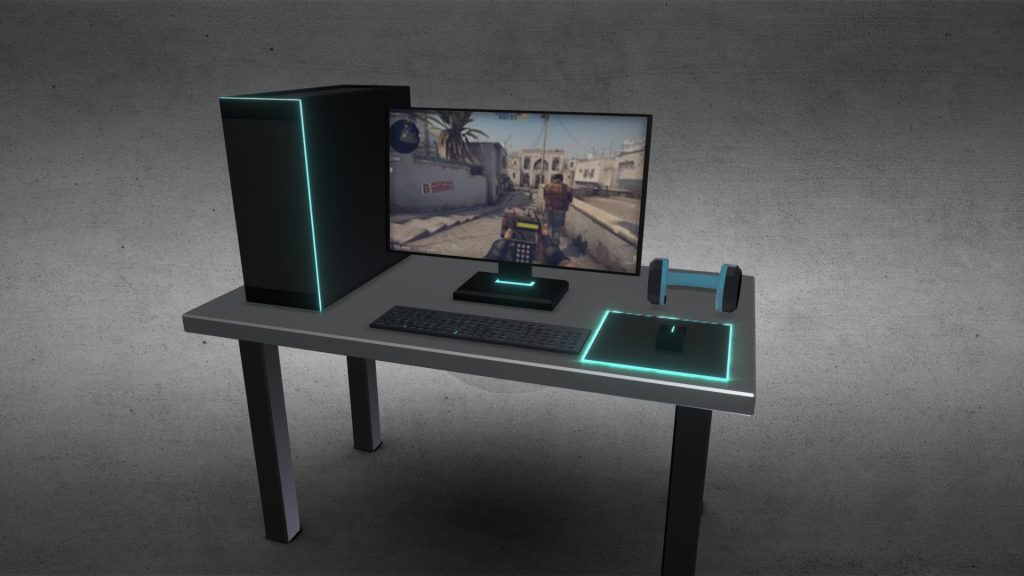A great gaming table isn’t just a surface to place your gear on—it’s the foundation of an organized, comfortable, and efficient gaming setup. With countless options available, finding the right gaming table can seem daunting. Here’s a guide to help you make an informed decision.
1. Why a Gaming Table Matters
A dedicated gaming table keeps your setup neat, ergonomic, and aesthetically pleasing. Unlike regular desks, gaming tables are designed with gamers’ needs in mind, offering features like cable management systems, RGB lighting, and durable surfaces to handle high-performance gear.
2. Size and Space Considerations
Measure your gaming space before purchasing a table. Ensure the table accommodates all your equipment—monitor(s), keyboard, mouse, and peripherals—while leaving room for future upgrades. Corner desks are ideal for maximizing space in smaller rooms, while large rectangular tables cater to expansive setups.
3. Materials and Durability
The materials of a gaming table impact its longevity and aesthetics:
- MDF or Particleboard: Affordable and lightweight but less durable.
- Steel Frames: Offer robust support for heavy setups.
- Tempered Glass: Stylish and modern but requires regular cleaning.
- Solid Wood: Premium and long-lasting but heavier and costlier.
4. Cable Management Solutions
One of the standout features of gaming tables is cable management. Look for:
- Built-in grommets to route cables neatly.
- Cable trays under the desk to keep wires off the floor.
- Hooks for headphones and other peripherals.
A clean setup not only looks great but also minimizes distractions during gameplay.
5. Adjustable Height Options
Standing desks or adjustable-height tables allow you to switch between sitting and standing positions, reducing the strain of long gaming sessions. Look for tables with motorized adjustments for seamless transitions.
6. Load-Bearing Capacity
A gaming table should support the weight of your entire setup, including monitors, PC towers, and accessories. Check the manufacturer’s specifications to ensure the table can handle your gear without wobbling or sagging.
7. Additional Features to Look For
Modern gaming tables often include:
- RGB Lighting: Adds ambiance and complements RGB-enabled peripherals.
- Cup Holders: Prevent spills near your gear.
- Headphone Hooks: Keep your headset within reach.
- Monitor Stands: Elevate monitors to eye level for better ergonomics.
8. Style and Aesthetics
Your gaming table should match the overall theme of your setup. Whether you prefer a minimalist black table or a vibrant RGB-lit desk, there’s a design for every gamer. Customizable tabletops with game-themed designs add a personal touch.
9. Budgeting for Your Table
Gaming tables range from budget-friendly models to high-end options with premium features. Decide on the features you need and set a budget accordingly. While basic tables suffice for casual gamers, competitive players might benefit from advanced features like height adjustability or specialized layouts.
10. Assembly and Maintenance
Before purchasing, check whether the table requires assembly. Some models come pre-assembled, while others include detailed instructions and tools. To maintain your table:
- Clean the surface regularly with appropriate materials.
- Avoid overloading beyond the weight limit.
- Protect the surface with mats to prevent scratches or heat damage.
Final Thoughts
A well-chosen gaming table enhances your gaming experience by providing a stable, organized, and ergonomic workspace. With careful consideration of size, features, and style, you can find the perfect table to elevate your setup.

